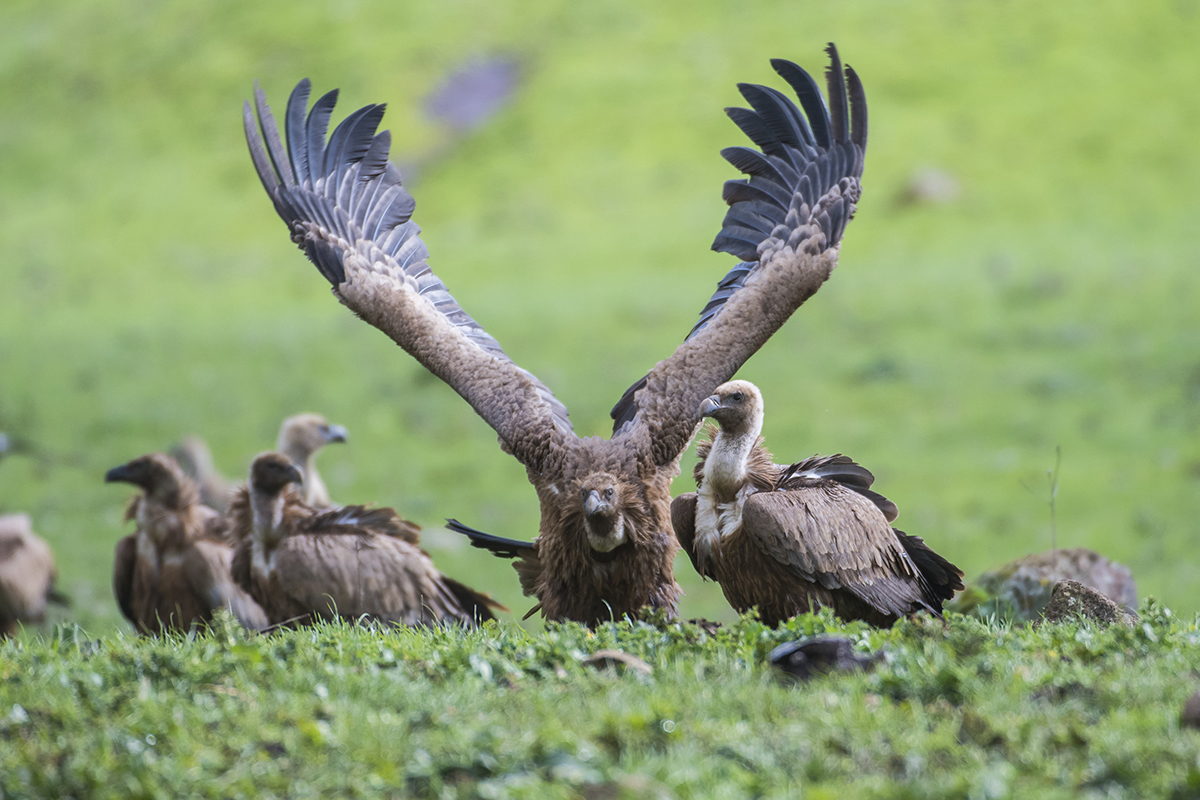
West Nile Virus poses a growing threat to captive Bearded Vultures in Europe, and has resulted in both chronic health issues and even death for certain individuals within the Bearded Vulture Captive Breeding Network, coordinated by the Vulture Conservation Foundation (VCF) on behalf of EAZA’s EEP. As we strive to produce as many fledglings as possible every year to increase the number of birds released in nature, any losses of captive Bearded Vultures caused by West Nile Virus adversely affect the Bearded Vulture EEP and its associated reintroduction projects. Together with partners, we are committed to tackling this threat, and now thanks to an ongoing initiative led by our colleagues, we will monitor this threat in one of the Centres we manage.
Tackling the threat of West Nile Virus in Guadalentín
As a joint initiative by the Centro de Análisis y Diagnóstico (CAD) and the Vulture Conservation Programme of the Junta de Andalucía, the Sistema de Vigilancia Pasiva (SVP) aims to monitor in the long-term the incidence of biological and chemical risk to wild populations of vultures and other threatened birds of prey in Andalucía.
Now, at the Bearded Vulture Captive Breeding Centre of Guadalentín, currently managed by the VCF following an agreement with the Junta de Andalucía, the SVP will be implemented in order to assess the potential incidence of West Nile Virus. This Virus is transmitted by certain mosquito species and represents a serious threat to captive Bearded Vultures to the point that several birds have died recently from this cause in other facilities.
As this disease coincides with the high peak of mosquito presence during the hot summer months and typically at low altitude, Guadalentín holds an advantage since it is located at an altitude, of 1,275m, therefore, making this place a cold and apparent virus-free environment. However, it is crucial to assess the extend of this threat at Guadalentín since this Centre is the most important of its kind as it breeds the most Bearded Vulture chicks in captivity and specializes in double adoptions by rearing chicks from other facilities every year. To do so, three unreleasable Griffon Vultures arrived at the Centre to act as sentinels and help detect the virus.
Using Griffon Vultures as sentinels to assess the threat of West Nile Virus

The Griffon Vultures that arrived at the Centre are all juvenile birds that were rescued from the wild after suffering from severe trauma. They entered the Quiebrajano Recovery Centre run by Junta de Andalucía to be rehabilitated, but due to their health issues, they will not be able to return to the wild. Therefore, on 13th November 2020, they were transferred to Guadalentín for the purpose of tracking if Nest Wild Virus is present at the Centre by testing if they contracted the virus every quarter. Why use these Griffon Vultures and not the Bearded Vultures directly? Because Bearded Vultures are extremely sensitive birds, especially during the breeding season, and the staff cannot check them our regularly to avoid disturbance. Instead, the Griffon Vultures will be monitored as indicators of the presence of the Virus. In addition, the Centre is in the process to set up official mosquito traps in the area for the same purpose.
Overall, this initiative will prove very useful to assess the threat at the Centre, and if successful, can be replicated in other facilities to monitor and tackle this threat efficiently.






